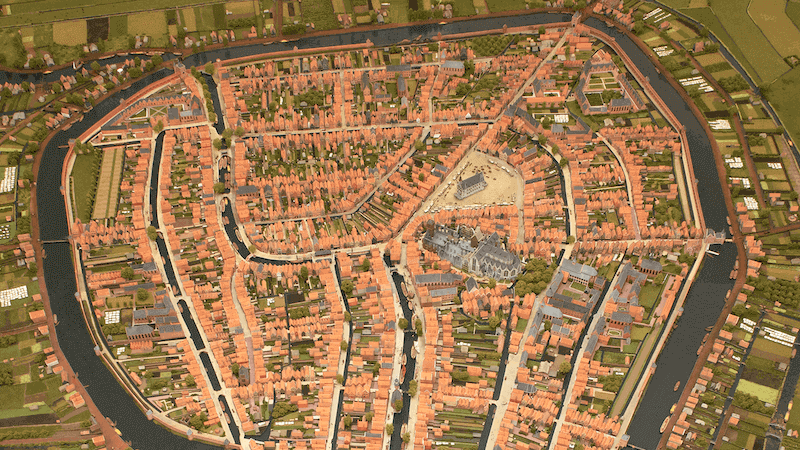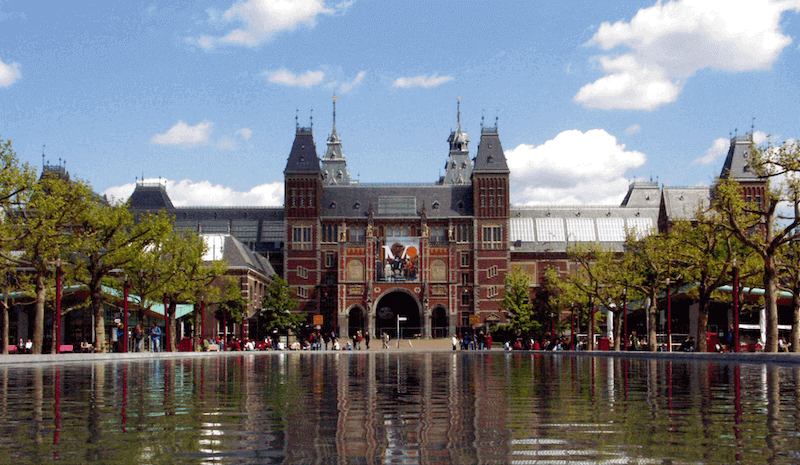In de Maand van het digitaal erfgoed organiseren Amsterdam Time Machine en Hilversum Time Machine een middag voor alle Time Machines en iedereen die op…

Van 12 tot en met 16 september vindt in Glasgow iPRES 2022 plaats. Het thema van deze internationale conferentie over digitale duurzaamheid is: Data for all, for good, for ever: let digits flourish. Het wordt ook dit jaar een hybride editie: je kunt zowel naar Glasgow reizen (afhankelijk van de coronamaatregelen) als online aanwezig zijn.
Het thema dit jaar is Data for all, for good, for ever: let digits flourish. Hiermee roept het iPRES 2022-programmacomité op tot reflectie en debat over hoe digitale bewaring bloeiende gemeenschappen, ecologieën, economieën en ideeën kan ondersteunen. Rondom dit thema vinden niet alleen workshops, tutorials, posters, paneldiscussies, hackathons plaats maar ook een heuse Digital Preservation Bake-Off Challenge.
Je kunt je nog inschrijven om iPres online bij te wonen. Je krijgt dan toegang tot een aangepast online programma.
Het conferentieprogramma van iPres 2022 en de keynote-speakers zijn inmiddels bekend. Keynote-speakers zijn:
Een overzicht van het programma vind je op: inconference.eventsair.com/ipres-2022/. Aan het einde van de eerste conferentiedag op 12 september worden weer de Digital Preservation Awards uitgereikt.
Onderstaande tijden zijn de tijden op locatie. Voor online/webcasts reken +01:00 uur erbij
16:00 -17:30
Digital Preservation Awards Ceremony
Remco van Veenendaal (Nationaal Archief) zal de NDE-award uitreiken die wordt gesponsord door het Nationaal Archief en Beeld en Geluid
12:30 – 12:45
Tamara van Zwol + Lotte Wijsman (Nationaal Archief): Short Paper: The C02 Emissions of Storage and use of Digital Objects and Data. Exploring Climate Actions.
The storage and use of digital heritage objects produce carbon dioxide (CO2) emissions. Cultural heritage organizations can take several measures into consideration in order to diminish these CO2 emissions. However, how much CO2 do storage and use produce and what measures could have (the most) effect? We examined the CO2 impact and possible measures on the basis of a case study. We have focused our investigation on the impact of servers, infrastructure, cloud storage and use. But the story does not end there. We look ahead, beyond the case study and beyond boundaries, introducing a research agenda within the Dutch Digital Heritage Network (DDHN).
12:00 PM – 12:45 PM
Panelgesprek: Computational Access to Digital Material: Exploring topics around engagement, ethics and resources
Computational access is a newly emerging approach to access within the digital preservation community. This type of access is becoming more widely discussed, but a lot of uncertainties are present around the term. A guide is being created as part of a collaborative piece of work between the Digital Preservation Coalition (DPC) and Leontien Talboom, Software Sustainability Institute (SSI) fellow 2021 to help digital preservation practitioners to understand the topic and take some practical steps towards implementation. The creation of this guide is leading to much wider discussions on this topic, many of which will not find their way into the guide in much detail. This panel session will therefore provide an opportunity and platform to discuss these issues in greater depth with a range of practitioners with practical experience in this area.
Lotte Wijsman en Tamara van Zwol (en Robert Gillesse) Poster: THE CO2 EMISSIONS OF STORAGE AND USE OF DIGITAL OBJECTS AND DATA
The storage and use of digital heritage objects produce carbon dioxide (CO2) emissions. Cultural heritage organizations can take several measures into consideration in order to diminish these CO2 emissions. However, how much CO2 do storage and use produce and what measures could have (the most) effect? We examined the CO2 impact and possible measures on the basis of a case study. We have focused our investigation on the impact of servers, infrastructure, cloud storage and use.
14:15- 14:30
Lotte Wijsman, Eva van den Hurk-van het Klooster (RHC Vecht en Venen), Tamara van Zwol: Short Paper: Preservation Watch: Working Towards A Supra-Organizational Preservation Watch Function Within The Dutch Digital Heritage Network
Preservation Watch is a vital function when it comes to monitoring internal and external developments that can benefit or risk digital objects. However, given the abundance of developments and risks, it is hard for organizations to keep up. As a solution, the Dutch Digital Heritage Network started work on a supra-organizational Preservation Watch function led by a group of experts from the field. This paper will ex-pand on the scope of the group, our goals, and our stock agenda for this year.
9:30 – 9:45
Susanne van den Eijkel en Daniel Steinmeier (KB): Short Paper: These Crawls can Talk. Context Information for Web Collections.
The National Library of the Netherlands has been harvesting the web since 2007. As is well known, an archived website is fundamentally different from a website on the live web. As a digital repository we create archival objects in the process of archiving, especially in the case of web harvesting since a website does not have clear boundaries. This means we define the limits ourselves. So how do we provide researchers with information on the choices we made during the process of selection, harvesting and ingest? How can we prove the integrity and authenticity of our web collections to our designated community? Based on the findings of Maemura et al. in 2018, three categories of information should be available for researchers of web collections: scope elements, process elements and context elements. This will help researchers understand what is present in a collection, what curatorial decisions have been made in the process and the reason behind the creation of the collection. In this article we will describe three documentation initiatives related to our web collections that we think could be seen as implementations of these three types of documentation elements.
10:30 – 10:45
Marjolein Steeman (Beeld en Geluid) Short Paper: The 2022 Revision of the PREMIS Rights Entity
As digital preservation practice has matured, our understanding of what is covered by the Rights landscape broadened significantly. However, the Rights entity in the PREMIS data model has not kept pace with these changes, undergoing only minor revisions. In 2019, the PREMIS Editorial Committee formed a working group on Rights to review how the entity could be changed to better reflect the evolving use cases of our community. The initial phase of this work has involved gathering use cases in order to perform a gap analysis with the current definition of Rights within the PREMIS model. Ahead of an official White Paper describing the scope of the revisions to be considered, this paper presents a discussion of the use cases that have informed this work, and the gaps we have identified, before briefly outlining the next steps to be taken.
In de Maand van het digitaal erfgoed organiseren Amsterdam Time Machine en Hilversum Time Machine een middag voor alle Time Machines en iedereen die op…

Hoe betrek je het publiek bij digitaal erfgoed? En wat valt het publiek op als ze naar digitaal erfgoed kijken? Ontdek het tijdens de eerste…

De vijfdaagse conferentie CIDOC richt zich op het makkelijker (her)gebruiken van collectieinformatie. Verschillende inspanningen worden verkend, variërend in reikwijdte, inhoud, geografie of thema. Daarnaast worden…
